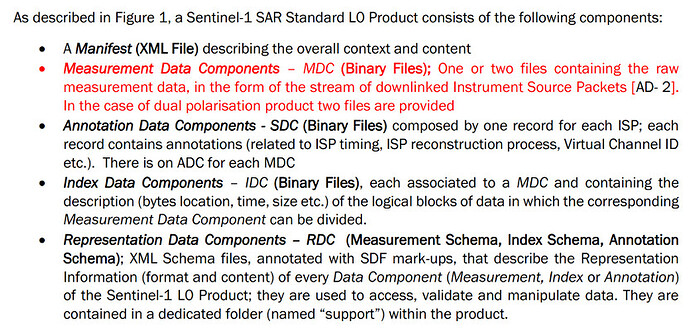Hi everyone,
I’m just getting started with Sentinel-1 IW-mode RAW data. After unpacking an RAW product, my .SAFE folder contains these .dat files of very different sizes. I am assuming each file corresponds to a sub-swath, but I’m not clear on:
- What exactly is inside each
.datfile? Is each file one “burst,” or does it hold multiple bursts for that subswath? - Why do the file sizes vary so much? Does it reflect number of bursts, or something else?
- How can I pick the right bursts or files to reconstruct just my area of interest? Is there a recommended way to read the annotation XML to find burst offsets and timing?
Any pointers on how to interpret these .dat files, map bursts correctly, and choose which data to process first would be much appreciated. Thanks!

